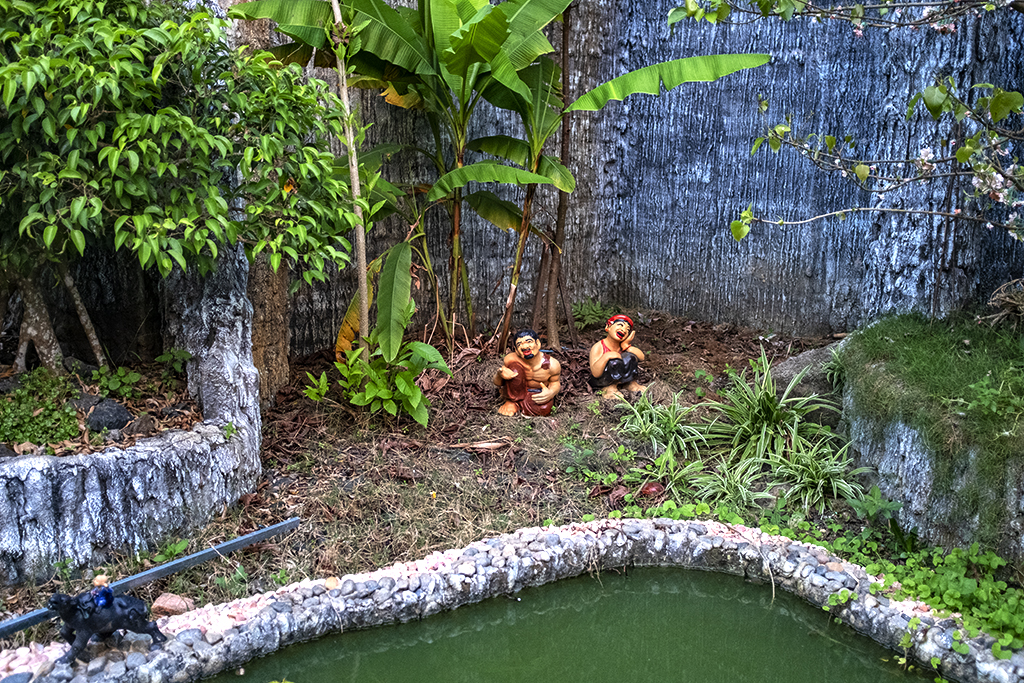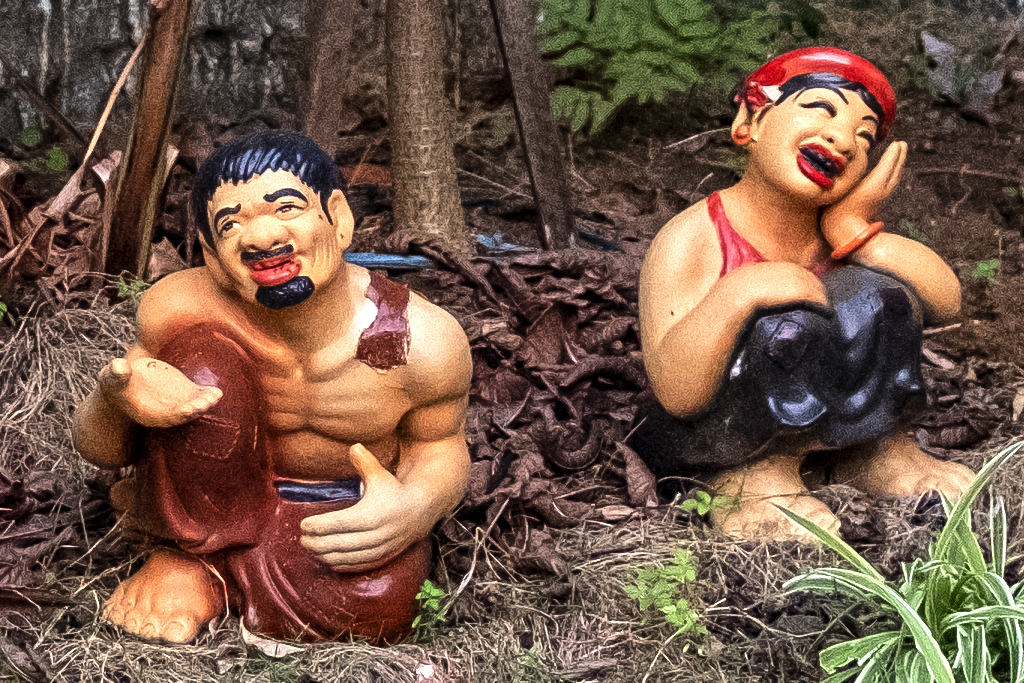I was rather surprised to see these figures in the miniature landscape behind Tĩnh Quang Buddhist Temple. They're Chí Phèo and Thị Nở, two physically repulsive, destitute and outcast characters from Nam Cao's 1941 short story. Their brief love affair is one of the most poignant and well known in Vietnamese fiction. You know you've written a classic when even illiterates know your characters. Of course, many people only know Chí Phèo and Thị Nở from a film version of the story.
Nam Cao died at just 36. Below is what I wrote about him at Wikivietlit:
Nam Cao (1915-1951), real name Trần Hữu Trí, was a fiction writer, playwright and poet, as well as an educator and author of a memoir.
He was born in Hà Nam, went to Nam Định at age 10 to study, got sick and had to return home before graduating from high school. He married at age 18, then took a train to Saigon a few months later to become a secretary for a tailor. In 1936, he published his first stories and poems.
Returning North that year, he obtained his high school degree, taught at a private school in Hanoi until it was requisitioned by the invading Japanese Army in 1940, forcing him to go to Thái Bình, where he continued to teach. One of his five children died of hunger during the Japanese occupation.
He joined the Vietminh resistance movement in 1943, then the Communist Party in 1948. He wrote about himself, "He was not suitable for the gun or the sword, so he would have to fight with the pen." In 1951, he was caught by the French in Ninh Bình and executed.
Nam Cao's 1941 short story,"Chí Phèo", is one of the most celebrated in Vietnamese literature, with its eponymous character an emblem for a type of hapless, desperate, downtrodden yet deeply human individual.
.


No comments:
Post a Comment